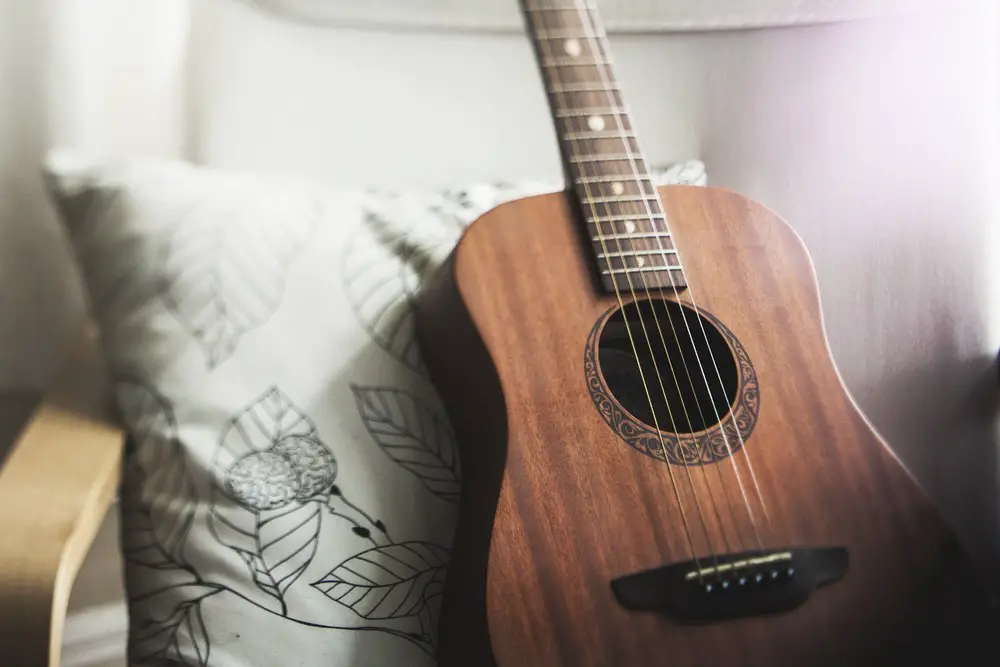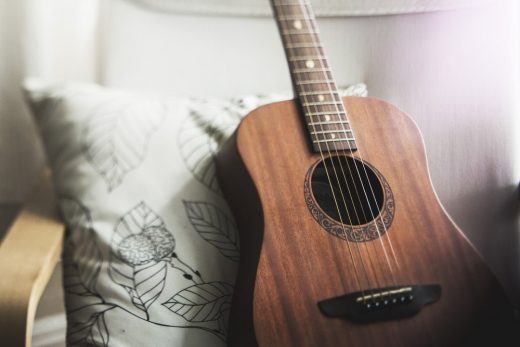The signs of a dry guitar, Music instrument advice, Humidity control tips
The Signs of a Dry Guitar
21 Nov 2022
A guitar can sound dry for many reasons, the most common of which is improper humidity control; when a guitar is played in a humid environment, the wood swells, making the instrument sound louder and fuller. Conversely, when a guitar is played in a dry environment, the wood shrinks and makes the instrument sound brighter and thinner. In addition to proper humidity control, here are other tips for getting your guitar to sound its best.
The six signs that your guitar is dry
Let’s explore the six signs that your guitar is dry.
The neck is straight- If you notice that the neck of your guitar is straight, it’s a sign that the wood has dried out.
The action is high- If the action on your guitar is high, it’s a sign that the wood has dried out.
There are cracks in the body- If you notice cracks in the body of your guitar, it’s a sign that the wood has dried out.
The fretboard is dry- If you notice that your guitar’s fretboard is dry, it’s a sign that the wood has dried out.
The finish is dull- If you notice that your guitar’s finish is dull, it’s a sign that the wood has dried out.
What to do if your guitar is dry
If your guitar is dry, it’s essential to address the issue immediately. There are things you can do to help moisturize your guitar and restore its sound. First, you can reseal the guitar’s finish using a special spray or rub-on sealant. In addition, it’s often helpful to give your guitar an occasional light oil treatment with a soft cloth. It will ensure that any cracks or other dry areas receive the moisture they need to stay healthy.
Finally, be sure to humidify your workspace so that your instrument remains at optimal humidity. With these steps, you can keep your guitar in good condition and maintain its great sound for years.
How to prevent your guitar from drying out
The best way to prevent your guitar from drying out is to keep it in a room with the proper humidity level. The ideal humidity level for a guitar is between 40% and 50%, and you can purchase a room humidifier to help maintain this humidity level. In addition, it’s essential to avoid exposing your guitar to sudden changes in temperature or humidity. These changes can cause the wood to expand or contract, leading to cracks and other damage.
Following these tips can keep your guitar sounding its best for years.
The benefits of keeping your guitar hydrated
There are many benefits to keeping your guitar hydrated. First, it helps the instrument sound its best. A well-hydrated guitar will have a fuller, richer sound than one that is dried out. In addition, it’s much less likely that a hydrated guitar will develop cracks or other damage.
Another benefit of keeping your guitar hydrated is making it easier to play. When a guitar is adequately humidified, the strings are less likely to buzz, and the neck is less likely to warp. It makes it easier to play chords and scale patterns without interruption.
Finally, keeping your guitar hydrated helps to prolong its life. A well-maintained guitar can last for decades, whereas a neglected one will need to be replaced much sooner.
Tips for humidifying your guitar
You can do things to ensure that your guitar stays adequately humidified at house. First, invest in a room humidifier and keep it running in your workspace, which will help maintain a consistent humidity level. In addition, it’s often helpful to give your guitar an occasional light oil treatment with a soft cloth, and it will ensure that any cracks or other dry areas receive the moisture they need to stay healthy.
Finally, avoid exposing your guitar to sudden changes in temperature or humidity. These changes can cause the wood to expand or contract, leading to cracks and other damage. Following these tips can keep your guitar sounding its best for years.
How often should you humidify your guitar?
It’s crucial to humidify your guitar regularly, especially if you stay in an area with a dry climate. A great way to do this is to invest in a room humidifier and keep it running in your workspace, which will help maintain a consistent humidity level. In addition, it’s often helpful to give your guitar an occasional light oil treatment with a soft cloth, and it will ensure that any cracks or other dry areas receive the moisture they need to stay healthy.
What are the best humidifiers for guitars?
There are a few different types of humidifiers that are suitable for guitars. One option is an ultrasonic humidifier, which uses high-frequency vibrations to generate a fine mist. Another option is a room humidifier, which circulates moist air throughout the room.
The best type of humidifier for your guitar will depend on the climate you live in and the size of your workspace. If you live in an arid climate, you must invest in a room humidifier for guitars to maintain a consistent humidity level. In addition, if you have a large workspace, consider an ultrasonic humidifier to target specific areas.
Comments on this The Signs of a Dry Guitar article are welcome.
Buildings
Building Designs
Los Angeles Architectural Designs
Architects: Ballman Khapalova

image courtesy of architects
LA River
Comments / photos for the The Signs of a Dry Guitar page welcome






